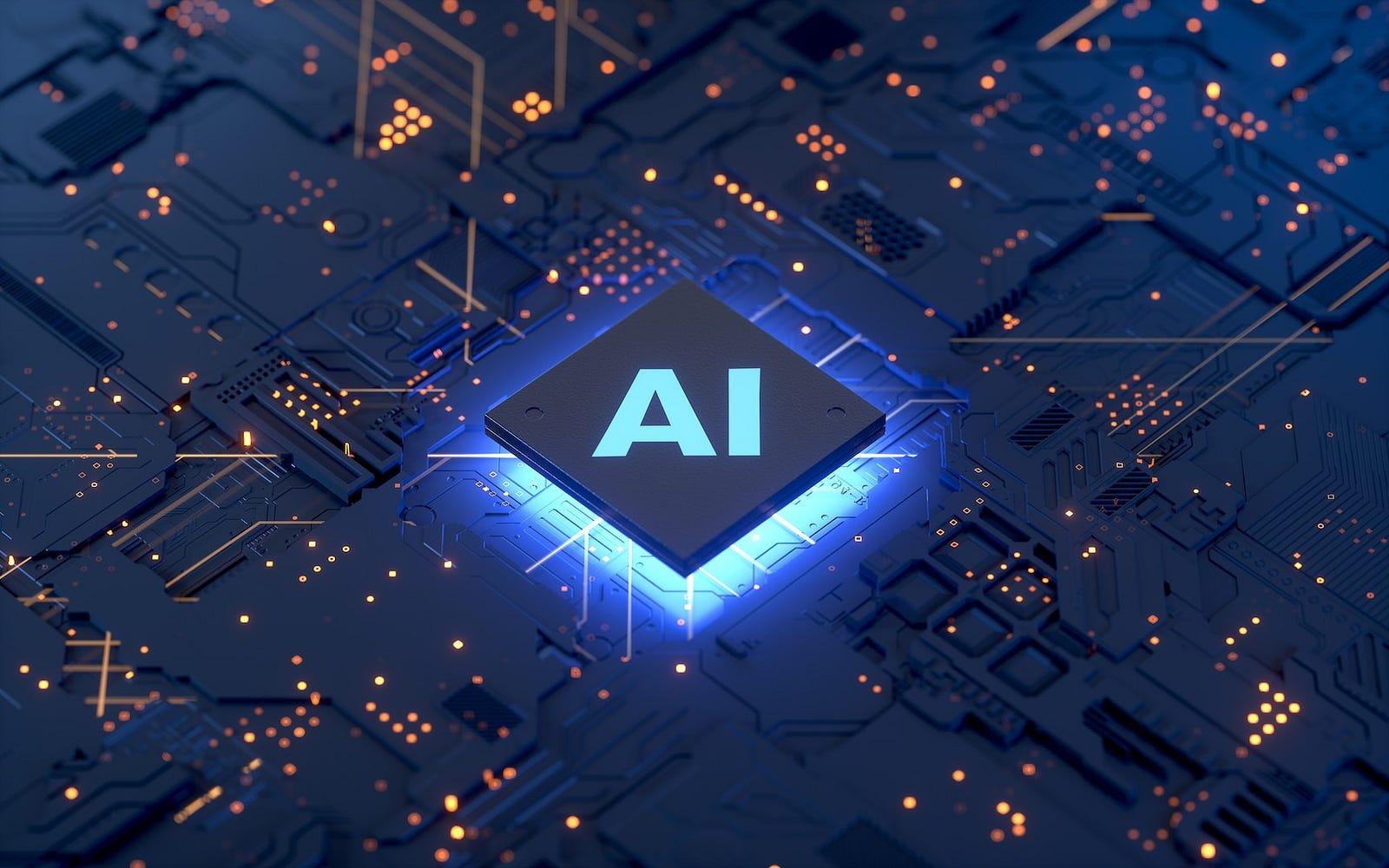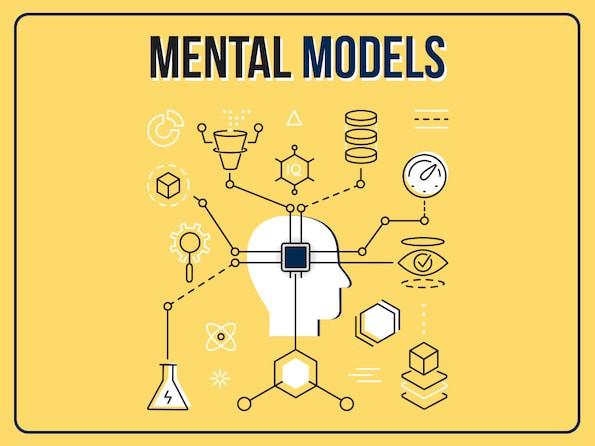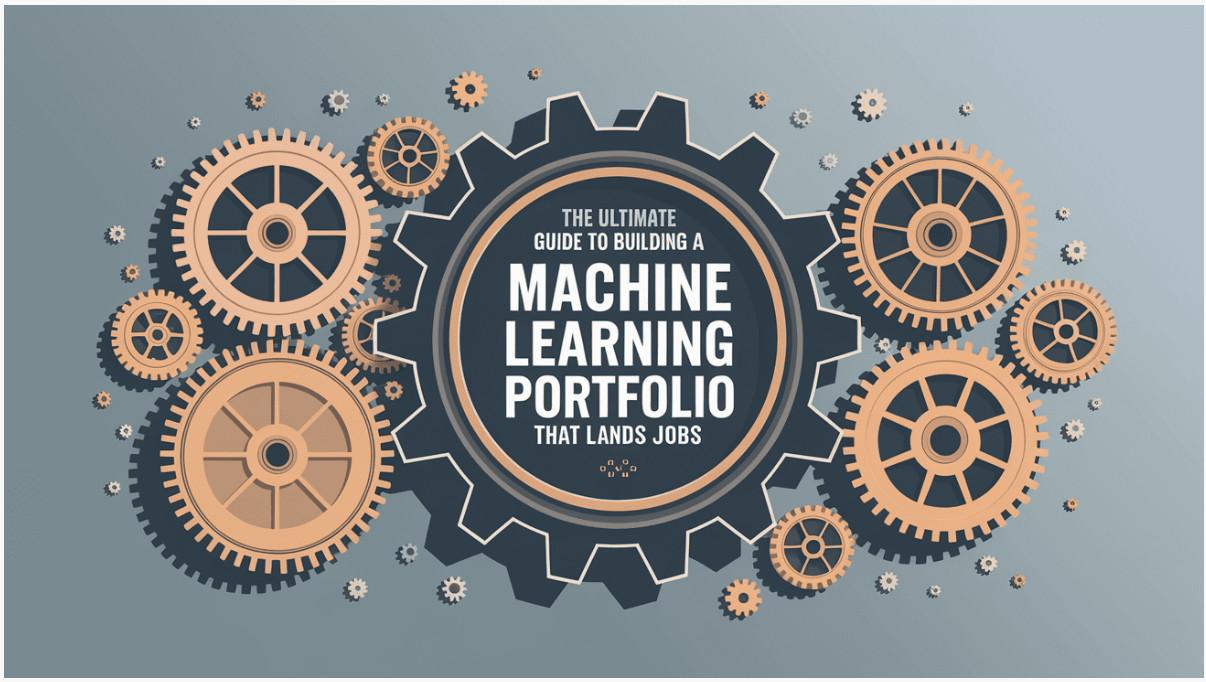Introduction: The New Language of ML Interviews, Impact Over Implementation
Machine learning interviews used to be all about the how:
How does your model work? What’s the architecture? Which optimizer did you use?
But as AI matures and companies integrate ML into every corner of their business, the conversation has shifted, dramatically.
Today, interviewers aren’t just looking for engineers who can train a model; they’re looking for thinkers who can quantify impact.
You’re no longer being evaluated only for your coding ability or your model’s accuracy. You’re being assessed for how well you understand why that model matters, to the product, to the customer, and to the bottom line.
In other words:
It’s not enough to build a good model. You have to explain how it moves the needle for the business.
This shift reflects a deeper industry truth.
FAANG and AI-first startups now prioritize engineers who can bridge technical excellence with strategic understanding.
When Meta asks you about a recommendation system, they’re not just checking if you can design embeddings, they want to know how it drives engagement, retention, or revenue.
When Amazon evaluates your model for delivery optimization, they’re not just testing your pipeline skills, they want to see if you can quantify cost savings or efficiency gains.
Yet most candidates fall short. They can explain precision and recall, but not customer retention or conversion uplift.
That’s where this guide comes in.
You’ll learn exactly how to:
- Reframe your ML work in business terms
- Quantify your model’s real-world impact
- Use structured storytelling to connect engineering with outcomes
- Stand out as the engineer who “gets the business”, not just the math
By the end of this article, you’ll be able to translate every project, experiment, and model into a story of measurable value, the kind interviewers remember long after the session ends.
Because the best ML engineers aren’t just technologists anymore, they’re translators of value.
As explained in Interview Node’s guide “Quantifying Impact: How to Talk About Results in ML Interviews Like a Pro”, data-driven storytelling is quickly becoming the single most valuable skill for advancing your ML career in 2025 and beyond.
Section 1: Why “Business Thinking” Is the New Core Skill for ML Engineers
Ten years ago, being a machine learning engineer meant proving you could make a model converge.
Today, it means proving you understand why that convergence matters.
The evolution of the ML interview mirrors the evolution of the role itself.
In the early days, the focus was purely technical, implement logistic regression, tune a random forest, explain overfitting.
Now, as organizations embed ML deeper into products and operations, hiring managers are asking a new kind of question:
“Can you connect your technical work to business value?”
Because the truth is, a brilliant model that doesn’t drive impact is just an academic exercise.
a. The Industry Shift: From Accuracy to ROI
As ML has become industrialized, the focus has shifted from model accuracy to return on investment (ROI).
Companies like Google, Netflix, and Amazon have realized that what truly differentiates great ML teams isn’t how elegant their architectures are, it’s how effectively they align model performance with business outcomes like:
- Reducing churn
- Increasing click-through rates
- Improving logistics efficiency
- Enhancing personalization and retention
An ML model that boosts retention by 2% can generate millions in revenue.
That’s why FAANG-level interviews increasingly ask candidates to quantify trade-offs and connect metrics to dollars, users, or time saved.
b. The New Interview Expectation: The “Full-Stack Thinker”
Modern ML interviews now include business-case discussions, especially for mid- and senior-level roles.
You might be asked:
- “What metrics would you monitor post-deployment?”
- “How do you know your model is creating measurable impact?”
- “What’s the opportunity cost of improving recall versus latency?”
These aren’t coding questions. They’re strategic questions, designed to assess how you think about product context.
FAANG interviewers call this the “impact lens.”
It separates execution-level engineers from those ready to lead ML initiatives that tie directly to KPIs.
c. Why This Skill Is Rare and Valuable
Most ML candidates are trained to optimize for technical precision, not business translation.
They can talk about AUC and ROC curves but freeze when asked how those metrics affect conversion or user experience.
Interviewers notice that gap.
They don’t just want to know what you built; they want to know why it mattered.
Those who can fluently explain how model improvements map to business metrics rise faster, get promoted earlier, and become natural candidates for tech lead or product-focused ML roles.
As pointed out in Interview Node’s guide “The AI Hiring Loop: How Companies Evaluate You Across Multiple Rounds”, interviewers now assess “cross-domain reasoning”, the ability to move seamlessly between code, systems, and business impact.
Section 2: Translating ML Metrics into Business Language
Most ML engineers can fluently discuss accuracy, recall, precision, or F1 scores.
But few can translate those metrics into what decision-makers actually care about, revenue, retention, efficiency, and customer satisfaction.
When you’re in an ML interview, remember this:
The interviewer might be an engineer, but they’re representing a company that measures success in business outcomes, not validation metrics.
That means if you can connect model performance to organizational value, you’re already ahead of 80% of candidates.
a. The Translation Problem
Let’s say you improved a model’s F1 score from 0.78 to 0.83.
That’s technically impressive, but on its own, it’s meaningless to a hiring manager.
Now imagine you frame it this way instead:
“By improving the F1 score by 5%, the model reduced false negatives by 12%, which cut customer support workload by 8% and saved $300K per quarter.”
Suddenly, your technical achievement becomes a business case.
That’s the key:
Translate model metrics into value metrics.
b. How to Reframe Technical Improvements
Use this three-step framework to make your impact resonate:
| Step | Question | Example |
| 1. Define the metric gap | What changed? | “Improved CTR prediction accuracy from 82% to 88%.” |
| 2. Quantify the downstream effect | What real-world result followed? | “This increased ad engagement by 4%.” |
| 3. Translate to business impact | Why does it matter financially or strategically? | “Which resulted in $1.2M in additional ad revenue per month.” |
This kind of framing transforms abstract metrics into quantifiable business stories that interviewers, especially those from FAANG or product-driven companies, deeply appreciate.
c. Learn the Company’s Language Beforehand
Every company has its own impact dialect.
For instance:
- Amazon focuses on cost optimization and scalability.
- Meta prioritizes user engagement and session length.
- Netflix cares about retention and personalization.
- Tesla emphasizes real-time system performance and safety.
Before any ML interview, research the company’s business model and find out what metric they live and die by.
If you can articulate your ML contributions in those terms, you’ll sound like someone who already works there.
d. Bonus: Use Ratios, Not Just Raw Numbers
Executives and interviewers often respond better to relative metrics than absolutes.
Saying “improved conversion by 3%” sounds small, until you say “that’s a 10% relative increase, representing 200,000 new monthly users.”
Context turns small wins into powerful impact stories.
As highlighted in Interview Node’s guide “Quantifying Impact: How to Talk About Results in ML Interviews Like a Pro”, top-performing candidates frame every answer using measurable business language, not jargon, but translation.
Section 3: Framing Your ML Projects as Business Case Studies
When interviewers ask you to “walk through a project,” most ML engineers make the same mistake, they start with architecture.
They’ll say:
“I used a ResNet variant with transfer learning on a labeled dataset of 20K images…”
Technically solid, but contextually hollow.
What the interviewer really wants to know is:
“Why did this project matter to the business, and what was the outcome?”
That’s why framing your ML projects as business case studies is one of the most effective ways to stand out in interviews.
a. The Case Study Formula
Instead of narrating your work as a timeline of technical steps, use a storytelling framework that mirrors business impact:
| Step | What to Cover | Example |
| Problem Context | What business challenge existed? | “Customer churn was increasing by 7% per quarter, and the retention team lacked predictive insights.” |
| ML Solution | How did you approach it technically? | “Built a gradient boosting model to identify at-risk users using engagement, purchase, and support ticket data.” |
| Business Outcome | What was the measurable result? | “Reduced churn by 2.5%, saving $1.8M annually in subscription revenue.” |
That’s what recruiters remember, a business problem solved through ML, not just a model built.
b. Create a Before-and-After Story
Whenever possible, frame your work as a transformation:
Before: “The company relied on manual segmentation that was slow and inconsistent.”
After: “We automated segmentation using clustering algorithms, cutting marketing campaign time from 3 weeks to 3 days.”
This not only shows your technical capability but also highlights how you amplified business efficiency.
c. Make Trade-offs Explicit
Executives and senior interviewers love candidates who understand trade-offs, because real-world impact always involves constraints.
Example:
“We chose a slightly less accurate model that reduced latency by 35%, allowing near real-time recommendations. That trade-off improved user session engagement by 10%.”
By discussing compromises, you show maturity and strategic awareness, key traits for senior or lead ML roles.
d. Tie It to KPIs
Every great ML case study concludes with a KPI tie-back.
This could be:
- Revenue impact (e.g., increased average order value by 5%)
- Operational improvement (e.g., reduced inference cost per request by 20%)
- User experience (e.g., improved response time by 150ms, enhancing satisfaction metrics)
When you anchor your project stories in quantifiable business terms, you’re no longer seen as “just an engineer”, you’re a problem solver with business empathy.
As emphasized in Interview Node’s guide “From Interview to Offer: InterviewNode’s Path to ML Success”, hiring managers at FAANG look for candidates who communicate impact as clearly as implementation.
Section 4: How to Use Metrics That Speak to Executives
The higher up the hiring ladder you go, the less time interviewers spend evaluating your code, and the more they evaluate your ability to communicate results in the language of business.
When you talk about metrics in an interview, remember: the CTO or hiring manager across from you probably doesn’t care about log loss, AUC, or MSE.
What they do care about is:
“How does this model save us money, make us money, or reduce risk?”
Learning to frame your technical metrics as executive-relevant insights is one of the most powerful storytelling skills in machine learning interviews.
a. The Three Executive Languages of Impact
Executives and product leaders listen for impact in three dimensions:
- Financial Impact (ROI):
- Example: “This demand forecasting model improved inventory turnover, reducing warehousing costs by 12% per quarter.”
- Why it works: You’re quantifying how ML decisions drive efficiency and profit.
- Operational Impact (Efficiency):
- Example: “Automating fraud detection reduced manual review time from 30 minutes to 5 minutes per case.”
- Why it works: You’re showing direct time and resource savings.
- Customer Impact (Experience):
- Example: “Personalized recommendations increased click-through rates by 9%, leading to a 4% improvement in customer retention.”
- Why it works: You’re demonstrating user-centric success, the lifeblood of modern tech companies.
By categorizing your outcomes this way, you can instantly adjust your messaging depending on who’s interviewing you, a product manager, director, or fellow engineer.
b. Combine Technical and Business Metrics
Never present metrics in isolation.
Pair a technical metric with a business metric to create context.
Example:
“Our model improved recall by 8%, which reduced false negatives in fraud detection by 18%, saving approximately $1.2M annually in chargeback losses.”
The pairing of precision (technical metric) with prevention (business metric) makes your contribution tangible and memorable.
c. Visualize Results When Possible
If you’re asked to discuss a project in a virtual interview, it’s perfectly acceptable to show a chart or dashboard snapshot (if anonymized).
Graphs showing “before vs. after” KPIs, like cost reduction, user engagement, or latency improvements, leave a lasting impression.
Visual storytelling is a superpower that helps you stand out among candidates who only speak abstractly.
d. Avoid Vanity Metrics
Interviewers can spot fluff.
Avoid overemphasizing metrics that sound impressive but lack substance, like “dataset size” or “number of models trained.”
Instead, focus on outcome quality, not process quantity.
It’s not about how many models you built, it’s about which one changed a key business metric.
As pointed out in Interview Node’s guide “The Hidden Metrics: How Interviewers Evaluate ML Thinking, Not Just Code”, the best engineers communicate why their decisions matter, not just how they were implemented.
Section 5: Framing Trade-Offs as Strategic Decisions in Interviews
When you’re solving a problem in a machine learning interview, you’re not just being judged on whether you can optimize a model, you’re being judged on whether you can think like a strategist.
That’s why senior ML interviewers love trade-off questions.
They reveal how you make decisions when there’s no perfect answer, just competing constraints.
The way you explain your trade-offs can show whether you think like a coder, a builder, or a leader.
Only one of those three gets the offer.
a. Why Trade-Offs Matter So Much
In real-world ML, every decision has costs:
- Higher accuracy means higher inference latency.
- More features mean slower retraining.
- Better recall may mean more false positives.
Interviewers want to see whether you can quantify and justify these trade-offs through a business lens.
Example:
“We reduced model complexity to cut inference time from 500ms to 120ms. While accuracy dropped slightly (0.92 → 0.89), it enabled real-time recommendations, boosting user engagement by 8%.”
That’s not just engineering reasoning, that’s strategic prioritization.
b. Use the “Impact-Justification Framework”
Whenever you’re explaining a decision, follow this structure:
| Step | What to Say | Example |
| 1. Identify the trade-off | Name both sides | “We had to choose between latency and precision.” |
| 2. Justify your choice | Link it to user or business value | “Real-time performance was more critical for engagement.” |
| 3. Quantify the effect | Back it up with a metric | “This improved session length by 6% despite a small accuracy dip.” |
This approach proves you’re not only optimizing for technical beauty but for organizational value, a core expectation at FAANG-level interviews.
c. Frame Trade-Offs as Leadership Thinking
Even if you’re not interviewing for a lead role, talk about trade-offs as if you own the decision.
Use language like:
- “We decided to prioritize…”
- “The team aligned on…”
- “We evaluated X vs. Y based on business constraints.”
This subtly signals ownership and cross-functional communication, qualities interviewers associate with impact-driven engineers.
d. Connect Trade-Offs to Real-World Cost
When you justify a trade-off, go one step further: estimate cost impact.
For example:
“By reducing model size, we cut cloud inference costs by 25%, saving ~$8K per month in GPU usage.”
Concrete trade-off analysis like that instantly differentiates you from candidates who only speak in accuracy points.
As explained in Interview Node’s guide “MLOps vs. ML Engineering: What Interviewers Expect You to Know in 2025”, the next generation of ML engineers will be evaluated as system and strategy thinkers, not just algorithmic problem-solvers.
Section 6: Storytelling Frameworks to Communicate ML Impact Clearly
If there’s one skill that consistently separates top-performing ML candidates from the rest, it’s storytelling, the ability to structure complex technical work into a narrative that feels relevant, engaging, and impactful.
You might have trained a state-of-the-art model, deployed it at scale, and optimized it for production, but if you can’t explain it in a way that resonates with your interviewer’s mental model, your impact will be invisible.
Storytelling isn’t just presentation, it’s translation. It’s how you make your audience understand what your work means.
a. Use the STAR-L Framework for ML Interviews
The classic STAR (Situation–Task–Action–Result) model is a great start, but ML interviews benefit from an extended version, STAR-L, where the “L” stands for Learning/Link to Business Value.
| Element | Description | Example |
| Situation | Set context, what was the business problem? | “Customer churn was increasing by 7% quarter-over-quarter.” |
| Task | Define your responsibility. | “Our team was tasked to predict churn risk using historical user data.” |
| Action | Explain what you did technically. | “Built a gradient boosting model, engineered behavioral features, and deployed through AWS SageMaker.” |
| Result | Quantify the measurable outcome. | “Reduced churn by 2.5%, saving $1.2M annually.” |
| Learning | Tie it to long-term impact or business understanding. | “Learned how to translate ML performance into retention metrics, aligning model goals with business KPIs.” |
That final “L” makes your story complete, it shows that you learned from your project and can apply that insight to new contexts.
b. The 3-Level Storytelling Rule
When explaining your work, always structure it for three audience levels, technical, strategic, and executive:
- Technical Layer: Algorithms, features, architecture.
- Strategic Layer: How it connects to the product or workflow.
- Executive Layer: Why it mattered to the business.
Example:
“We used a recurrent model (technical) to predict customer reorders (strategic), which improved retention by 4% in Q4 (executive).”
That structure helps you communicate fluently across roles, and that’s precisely what top tech companies want from ML engineers.
c. Storytelling = Confidence
Interviewers subconsciously equate clear storytelling with confidence.
When you narrate your work with logical flow, you signal mastery.
Conversely, when you over-explain details out of order, it feels like uncertainty.
Practicing your stories out loud, ideally in mock interviews, helps you internalize clarity and timing.
d. Leverage Visual and Numeric Anchors
Great storytelling includes specific data points and mental images.
Numbers like “reduced training time by 40%” or “increased accuracy by 3.5% with 10% fewer parameters” stick.
Visual phrasing like “turned hours of manual labeling into a one-click automation” adds memorability.
When you mix narrative flow with tangible data, your story becomes persuasive, not just descriptive.
As pointed out in Interview Node’s guide “The Forgotten Round: How to Ace the Recruiter Screen in ML Interviews”, storytelling isn’t just for technical rounds, recruiters also evaluate how clearly you convey business alignment early in the process.
Section 7: Common Mistakes ML Engineers Make When Explaining Impact
Even the most talented ML engineers often fail to convey their true value in interviews, not because they lack technical skill, but because they frame their accomplishments in ways that don’t connect with what interviewers or hiring managers actually care about.
Understanding the common mistakes engineers make when explaining impact can help you avoid them, and deliver answers that stick in the minds of interviewers long after the call ends.
a. Mistake #1 - Focusing on Models, Not Outcomes
Engineers often start their answers with how they built something instead of why.
Example:
“I used XGBoost with a custom learning rate scheduler…”
That’s technically accurate but emotionally flat.
Instead, start with the problem and result:
“Our company was losing users due to poor personalization. I built a model that improved recommendations, increasing session engagement by 6%.”
You’ve just shifted from feature-level to impact-level storytelling.
Tip: Always anchor your answer in business or user context first, then layer in technical details.
b. Mistake #2 - Using Abstract Metrics
Interviewers don’t remember numbers like “increased precision from 0.82 to 0.87.”
They remember what those numbers mean in context:
“Reducing false positives by 10% cut fraud investigation time by 3 hours per case.”
Business impact is always the translation layer for your metrics.
c. Mistake #3 - Ignoring Collaboration and Cross-Functional Impact
ML engineers rarely work in isolation.
But in interviews, many candidates describe their projects as if they were solo endeavors.
They miss the chance to show collaborative influence, something top companies highly value.
Example correction:
“Partnered with product managers to redefine success metrics and align model thresholds with customer satisfaction targets.”
This shows both technical and communication maturity, a hallmark of senior-level candidates.
d. Mistake #4 - Downplaying Failures and Iteration
Many candidates only highlight what worked, skipping over what they learned when things didn’t.
But interviewers often look for resilience and adaptability, traits that emerge during experimentation.
Example:
“Our first model overfit due to limited data diversity. After adding domain-specific augmentations, performance stabilized and reduced false alarms by 15%.”
This signals growth, not weakness.
e. Mistake #5 - Forgetting to Tie Impact to the Company’s Goals
You can quantify results perfectly but still miss alignment if your example doesn’t match the company’s priorities.
If you’re interviewing at Netflix, talk about user retention.
At Amazon, highlight cost efficiency.
At Google, focus on scale and infrastructure robustness.
Research the company’s product KPIs and reframe your stories around them.
Avoiding these five mistakes can immediately elevate how your interviewers perceive you.
You’ll stop sounding like “just another engineer” and start sounding like a strategic contributor who understands both data and direction.
As explained in Interview Node’s guide “FAANG ML Interviews: Why Engineers Fail & How to Win”, technical brilliance is only half the story, the other half is knowing how to make your brilliance visible in business terms.
Section 8: Conclusion - From Engineer to Impact Storyteller
Machine learning interviews in 2025 and beyond are no longer about who can build the most sophisticated model, they’re about who can connect the dots between data, design, and dollars.
A few years ago, you could impress a recruiter by walking through your hyperparameter tuning process. Today, that’s table stakes.
What interviewers really want is someone who can take a complex ML system and say:
“Here’s how this improved user experience.”
“Here’s how it saved our company time and money.”
“Here’s how it influenced product strategy.”
In other words, they want impact translators, engineers who think like business leaders.
By combining business literacy with technical fluency, you become exponentially more valuable. You’re not just answering interview questions, you’re showing how you create value.
So the next time you describe your work, remember:
- Start with the outcome. What changed?
- Link it to business context. Who benefited, and how?
- Quantify it. Even approximate numbers matter more than none.
- Reflect on learning. What strategic or product insights did you gain?
When you master these habits, you stop sounding like a candidate explaining a project, and start sounding like a leader explaining a transformation.
That’s the secret language of success in ML interviews.
As perfectly captured in Interview Node’s guide “From Interview to Offer: InterviewNode’s Path to ML Success”, the engineers who win aren’t just those who answer correctly; they’re those who communicate impact clearly and repeatedly.
10 Detailed FAQs: Talking About Business Impact Like a Pro
1. What does “business impact” really mean in an ML interview?
Business impact means demonstrating how your work led to tangible improvements, in metrics like revenue, engagement, retention, cost reduction, or efficiency.
For instance, saying “reduced false positives by 15%” becomes far stronger when followed by “saving $2M in fraud costs annually.”
2. How can I discuss business impact if my role was purely technical?
Even if you weren’t directly tied to business metrics, you can still show impact through proxy metrics: faster pipelines, reduced infrastructure cost, improved inference latency, or accelerated experimentation speed.
For example: “Reduced model retraining time by 40%, enabling product teams to iterate features twice as fast.”
3. What if I worked on research that didn’t reach production?
That’s still impact, it’s knowledge impact.
You can say: “Designed a research prototype that reduced model drift in testing and informed future deployment decisions.”
Recruiters appreciate candidates who frame research as part of a longer-term innovation process.
4. How specific should I be with business metrics?
Be as specific as you can without breaching confidentiality.
If exact numbers are sensitive, use percentages or relative comparisons:
“Improved onboarding model accuracy by 5%, which increased user activation rate by approximately 10%.”
The goal is clarity, not precision.
5. I’m a junior ML engineer - how can I show business understanding?
You can still shine by showing curiosity about why your model mattered.
Mention that you tracked post-deployment metrics, collaborated with product teams, or evaluated model success against user engagement KPIs.
That level of initiative signals strong potential for growth.
6. What’s the best way to talk about team contributions?
Always phrase team work in terms of shared success.
For example: “Worked with data engineers to improve feature pipelines, reducing data lag by 60%, which helped the analytics team deliver real-time insights.”
You’re highlighting collaboration and value creation, a double win.
7. How can I show business impact in an open-source or academic project?
You can reframe your impact through adoption, performance, or learning contribution.
Example: “Open-sourced a library now used by 200+ developers to accelerate experimentation in NLP.”
Even in research, adoption and usage are valid indicators of impact.
8. What should I say if my model failed or underperformed?
Own it, and show what you learned.
“Our model didn’t outperform the baseline initially, but analyzing the failure helped us uncover data leakage that improved our subsequent deployment by 12%.”
This shows resilience, reflection, and growth, qualities interviewers love.
9. How can I prepare to talk about impact without sounding rehearsed?
Use structured spontaneity, know your key examples, metrics, and framing (STAR-L method), but don’t memorize scripts.
Record yourself explaining your project 3–4 times in different ways.
The goal is conversational clarity, not robotic precision.
10. What’s the single best sentence structure to communicate impact?
Here’s the golden template:
“I built [technical solution] to solve [business problem], which resulted in [measurable outcome] that improved [business metric].”
Example:
“I built a demand forecasting model to optimize inventory, which reduced stockouts by 14% and improved supply chain reliability.”
That one sentence covers the entire business narrative arc, problem, solution, result, and value.
Bonus: How Do I Build This Skill Over Time?
- Record your mock interviews and analyze with AI tools like InterviewNode.
- Reframe one project per week using business metrics.
- Follow InterviewNode’s “impact-first storytelling” approach to integrate this habit naturally.
Remember: the more you practice framing your work in value terms, the easier it becomes to do it authentically, even under pressure.
Final Reflection
The world doesn’t just need ML engineers who can train models.
It needs engineers who can explain why those models matter, to users, to revenue, and to mission.
That’s your advantage.
When you can clearly show the connection between model performance and measurable business outcomes, you stop competing on technical skill alone. You start standing out for strategic thinking.
Every interview you have from now on is an opportunity, not just to prove your skill, but to demonstrate your impact mindset.
And when you master that, you don’t just pass interviews, you build a career that scales as elegantly as the systems you design.






